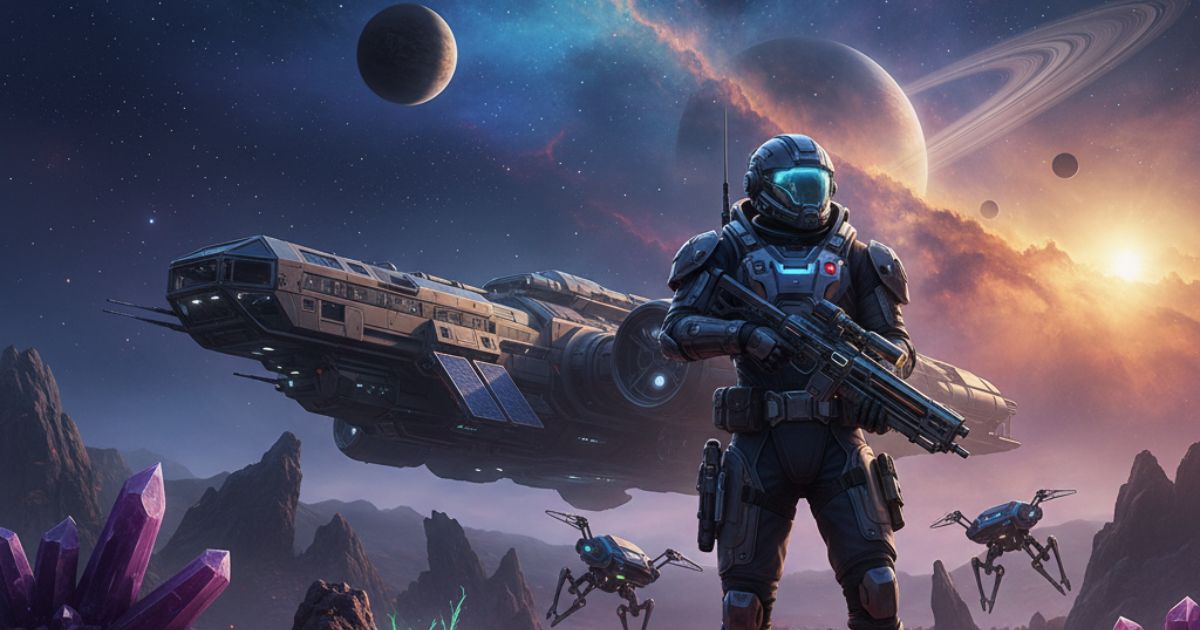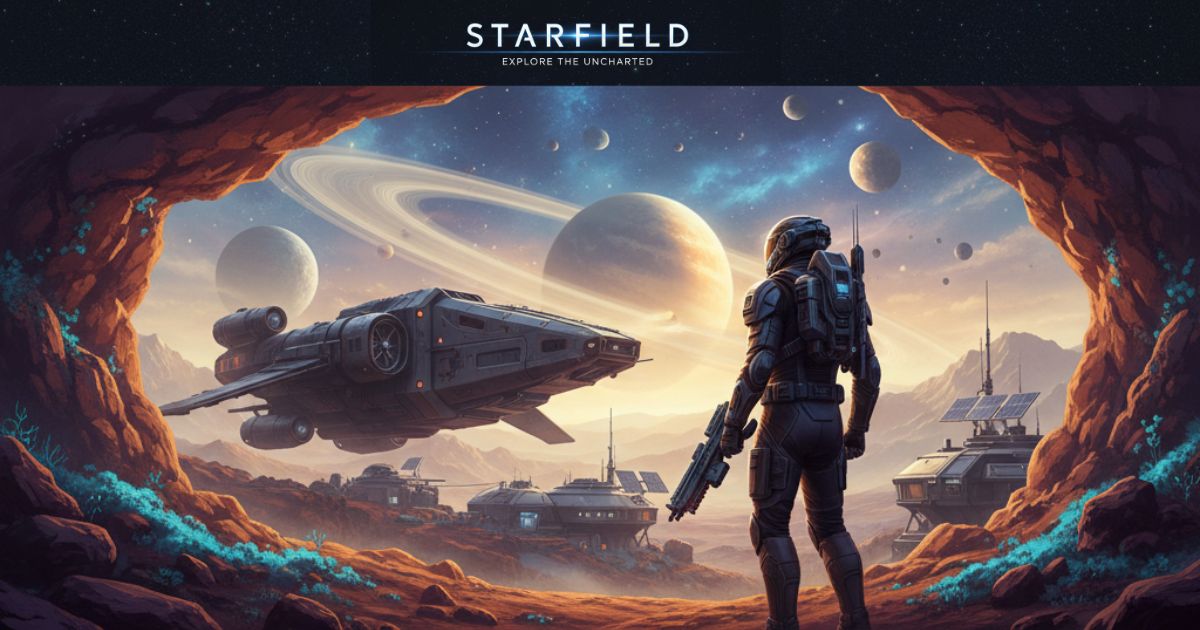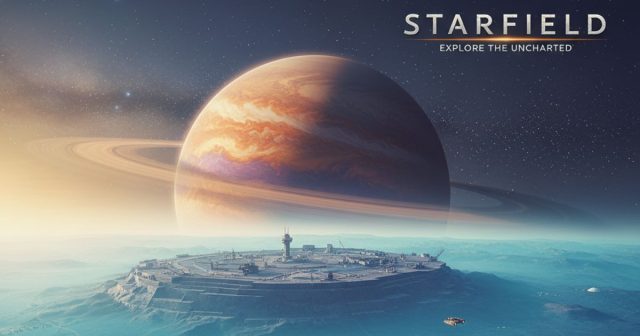When Bethesda Game Studios unveiled Starfield, anticipation reached astronomical proportions. Touted as Bethesda’s first new universe in over two decades, Starfield promised an open-world space RPG that would redefine how we experience interstellar exploration and narrative freedom. After dozens of hours traversing its numerous planets, engaging in starship combat, and uncovering hidden backstories, this review examines whether Starfield lives up to its celestial hype. From the grandeur of its cosmic vistas to the minutiae of its character-creation system, join us on a thorough journey across the galaxy.
Setting & Premise
Starfield drops players into the year 2330 within the Settled Systems, a cluster of star-charted space extending outward from Solar orbit. You begin as a new recruit in Constellation, an organization devoted to charting the unknown. Early missions guide you through procedural worlds, derelict space stations, and politically volatile colonies. Bethesda blends handcrafted hubs like Akila City and Neon with a vast array of procedurally generated planets, each boasting unique minerals, plant life, and potential threats. The lore expands through logs, holotapes, and NPC dialogue, crafting a sense of genuine discovery as you leap from your rusty spaceship onto uncharted landscapes.

Graphics & Art Direction
Visually, Starfield marks Bethesda’s most ambitious attempt at realism. Planetary surfaces exhibit varied biomes—crimson deserts, neon-tinted jungles, and frigid ice caps—each rendered with striking color palettes. Dynamic weather effects, from acid rain to sweeping dust storms, enhance immersion. Starship interiors feel lived in: consoles hum with LED indicators, while drifting cargo crates and flickering panels hint at past turmoil. Character models have improved over previous Bethesda titles, though facial animations occasionally slip into the uncanny valley. Cinematic nebulae and starfields evoke a true sense of scale, reminding players of the vastness that lies beyond any one world’s horizon.
Gameplay & Mechanics
At its core, Starfield retains Bethesda’s hallmark freedom: choose your path as a trader, pirate, bounty hunter, or diplomatic emissary. The skill system spans Combat, Tech, and Social trees, letting you specialize in heavy weaponry, ship-based lasers, hacking, or persuasion. Combat on foot feels weighty and strategic, with cover mechanics, ballistic weapon variants, energy rifles, and modifiable grenades. Starship battles evolve the ground combat formula: you pilot your ship in zero-gravity dogfights, allocating power between shields, engines, and weapons in real time. Ship customization is deeper than anticipated, from paint jobs and decals to hardpoint loadouts. However, some players may find resource management—crafting oxygen supplies, repairing hull breaches, and juggling inventory weight—a tad cumbersome, especially during extended planetary sojourns.
Story & Characters
Starfield’s narrative weaves personal ambition with cosmic mystery. Customizing your Origin background affects initial perks and NPC reactions, adding replay value. As a Constellation cadet, your quest to uncover the universe’s first alien artifact unfolds amidst faction politics. The Freestar Collective and United Colonies vie for control, each offering branching questlines. Companion characters, such as the stalwart ex-soldier Ryujin Nakagawa and the cynical scientist Rigel Parikh, feature deep voice acting and personal side missions that explore themes of loyalty, ethics, and sacrifice. While the main plot occasionally stalls in exposition, side quests brim with moral complexity. Your choices carry weight: does your crew member survive a hostile boarding? Will you broker peace or unleash sabotage?
Soundtrack & Audio
Ambient sound design and music elevate Starfield’s tone. Composer Inon Zur delivers a score blending orchestral swells with electronic undertones, punctuating cinematic moments like boarding a derelict vessel or witnessing an eclipse. On-planet ambiance includes distant wildlife calls, wind howling through canyons, and the echo of your footsteps in cavernous ruins. Weapon discharges and footstep sounds are crisp and satisfying. Dialogue quality generally impresses, though lip-sync in crowd scenes can lag behind voice lines. Audio cues in starship combat, such as shield overload alarms and weapon cooldown pings, help maintain situational awareness during intense skirmishes.
Technical Performance & Bugs
On PC and next-gen consoles, Starfield runs smoothly at 30-to-60fps, depending on graphical settings. Loading times between space travel and planetary landings average under 20 seconds on SSDs. However, Bethesda’s signature bugs persist: NPC pathfinding occasionally clips through geometry, quest markers sometimes vanish, and rare crashes occur during rapid fast-travel loops. A hotfix cycle has remedied several early issues, but a few visual pop-ins and texture streaming hiccups remain. These hiccups rarely break immersion but serve as reminders that Starfield is an evolving universe rather than a polished static product.
Replayability & DLC Prospects

With dozens of factions, procedural planets, and a robust character builder, Starfield boasts high replay value. Experimenting with a stealth-focused build versus an all-out assault approach yields distinctly different experiences. Bethesda’s track record suggests ambitious DLC and expansions are on the horizon—perhaps introducing alien homeworlds or deeper factions. Mod support is slated to arrive post-launch, unlocking community-driven content like custom ships, planetary packs, and narrative overhauls. For completionists, landing on every planet, discovering every relic, and maxing out all skill trees could take hundreds of hours.
Conclusion
Starfield represents Bethesda’s boldest leap into new territory. Its vast galaxy, deep customization options, and emergent storytelling form the backbone of a compelling space-faring adventure. While technical quirks and pacing issues occasionally surface, the core experience of charting unknown worlds and forging your own legend shines through. For fans of open-world RPGs and space exploration alike, Starfield offers a stellar odyssey that sets the stage for an expansive future. Strap in, captain—your journey has only just begun.
For further reading, explore God of War Ragnarök Review: A Thrilling Norse Saga That Redefines Action-Adventure.








